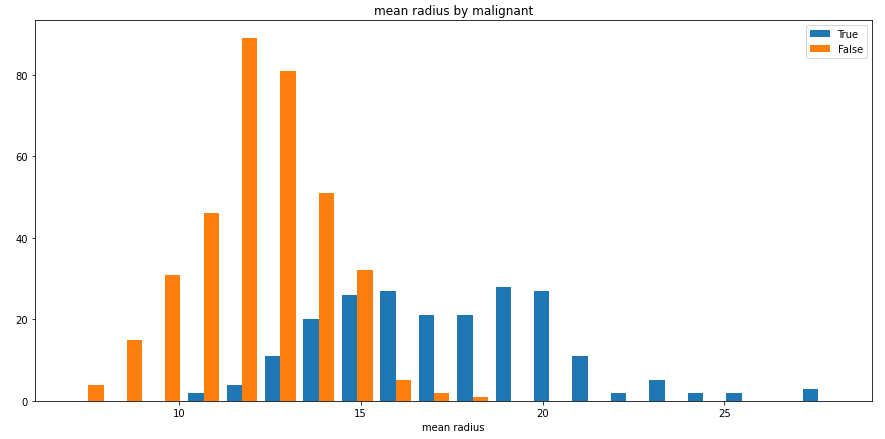Examples¶
Examples can be imported and executed from dython.examples.
associations_iris_example()¶
Plot an example of an associations heat-map of the Iris dataset features. All features of this dataset are numerical (except for the target).
Example code:
import pandas as pd
from sklearn import datasets
from dython.nominal import associations
# Load data
iris = datasets.load_iris()
# Convert int classes to strings to allow associations
# method to automatically recognize categorical columns
target = ['C{}'.format(i) for i in iris.target]
# Prepare data
X = pd.DataFrame(data=iris.data, columns=iris.feature_names)
y = pd.DataFrame(data=target, columns=['target'])
df = pd.concat([X, y], axis=1)
# Plot features associations
associations(df)
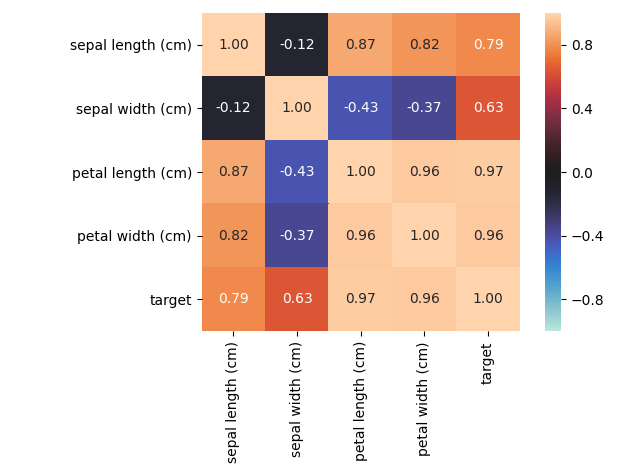
associations_mushrooms_example()¶
Plot an example of an associations heat-map of the UCI Mushrooms dataset features. All features of this dataset are categorical. This example will use Theil's U.
Example code:
import pandas as pd
from dython.nominal import associations
# Download and load data from UCI
df = pd.read_csv('http://archive.ics.uci.edu/ml/machine-learning-databases/mushroom/agaricus-lepiota.data')
df.columns = ['class', 'cap-shape', 'cap-surface', 'cap-color', 'bruises', 'odor', 'gill-attachment',
'gill-spacing', 'gill-size', 'gill-color', 'stalk-shape', 'stalk-root', 'stalk-surface-above-ring',
'stalk-surface-below-ring', 'stalk-color-above-ring', 'stalk-color-below-ring', 'veil-type',
'veil-color', 'ring-number', 'ring-type', 'spore-print-color', 'population', 'habitat']
# Plot features associations
associations(df, nom_nom_assoc='theil', figsize=(15, 15))
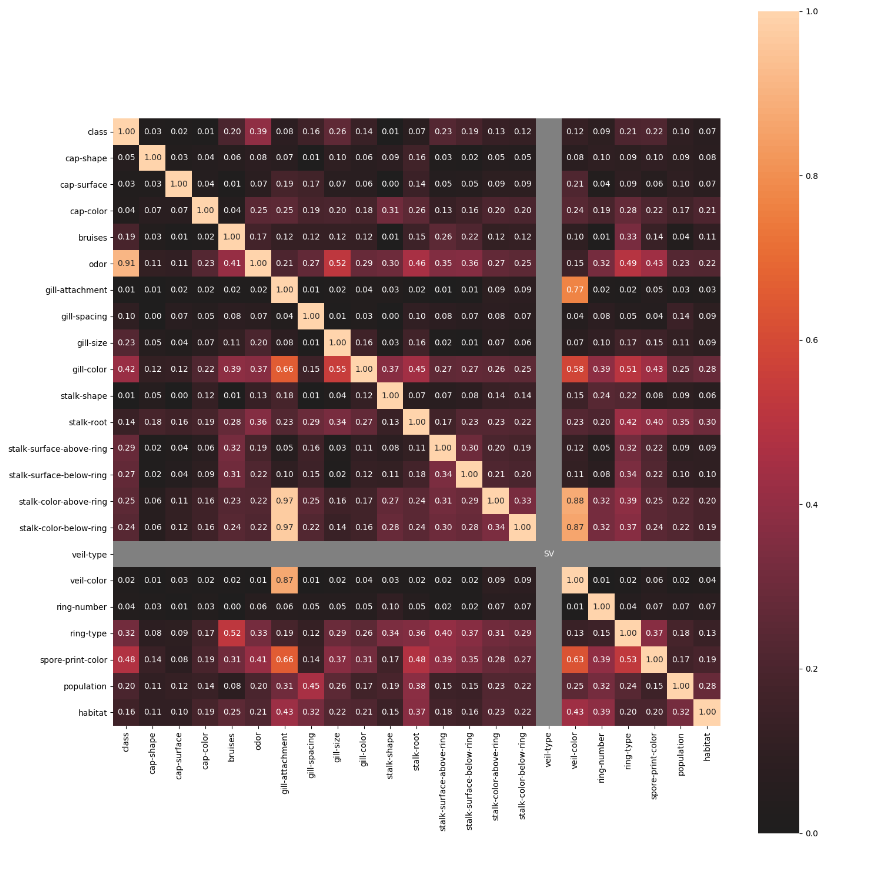
ks_abc_example()¶
An example of KS Area Between Curve of a simple binary classifier trained over the Breast Cancer dataset.
Example code:
from sklearn import datasets
from sklearn.model_selection import train_test_split
from sklearn.linear_model import LogisticRegression
from dython.model_utils import ks_abc
# Load and split data
data = datasets.load_breast_cancer()
X_train, X_test, y_train, y_test = train_test_split(data.data, data.target, test_size=.5, random_state=0)
# Train model and predict
model = LogisticRegression(solver='liblinear')
model.fit(X_train, y_train)
y_pred = model.predict_proba(X_test)
# Perform KS test and compute area between curves
ks_abc(y_test, y_pred[:,1])
Output:
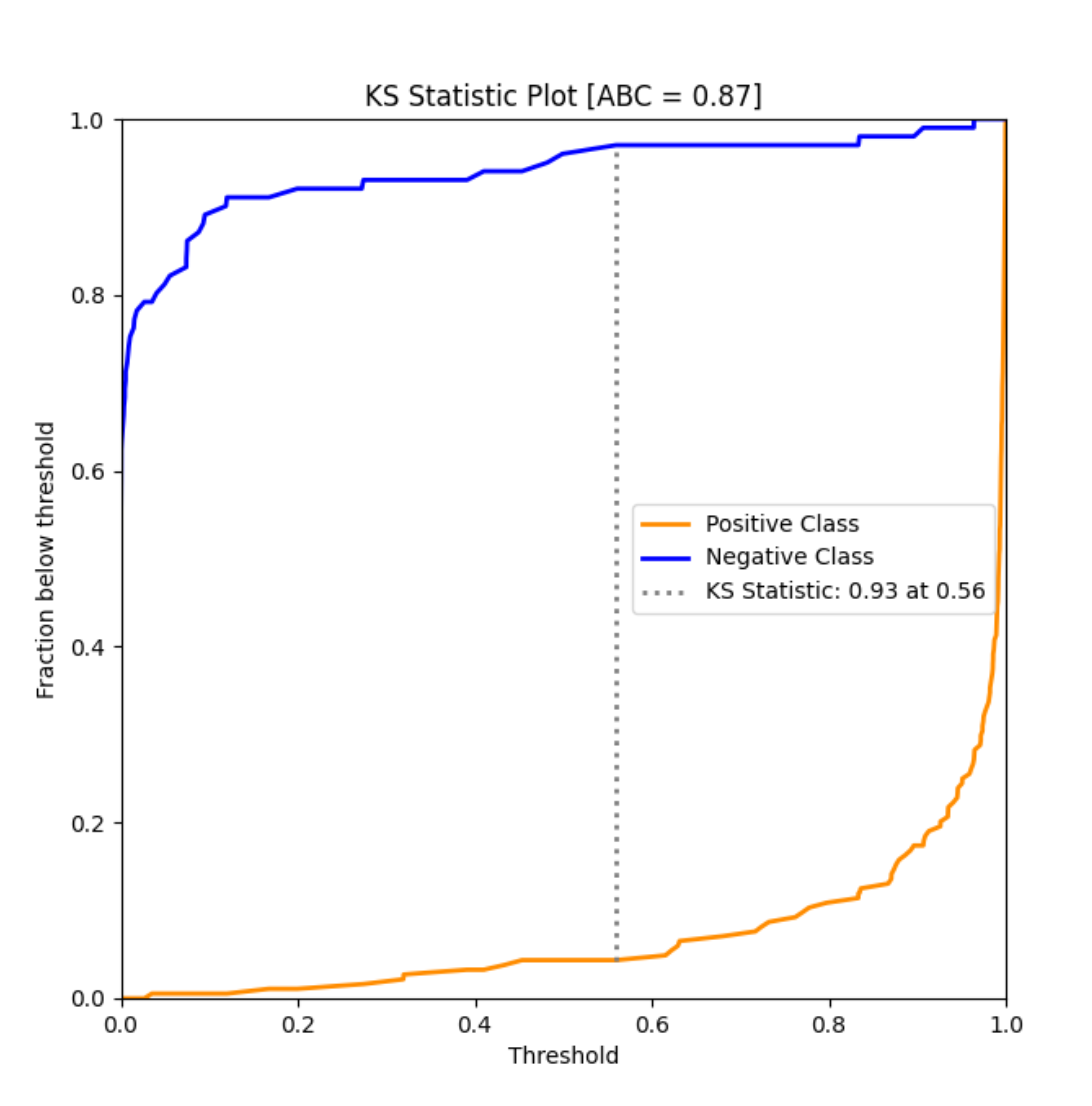
pr_graph_example()¶
Plot an example Precision-Recall graph of an SVM model predictions over the Iris dataset.
Example code:
import numpy as np
from sklearn import svm, datasets
from sklearn.model_selection import train_test_split
from sklearn.preprocessing import label_binarize
from sklearn.multiclass import OneVsRestClassifier
from dython.model_utils import metric_graph
# Load data
iris = datasets.load_iris()
X = iris.data
y = label_binarize(iris.target, classes=[0, 1, 2])
# Add noisy features
random_state = np.random.RandomState(4)
n_samples, n_features = X.shape
X = np.c_[X, random_state.randn(n_samples, 200 * n_features)]
# Train a model
X_train, X_test, y_train, y_test = train_test_split(X, y, test_size=.5, random_state=0)
classifier = OneVsRestClassifier(svm.SVC(kernel='linear', probability=True, random_state=0))
# Predict
y_score = classifier.fit(X_train, y_train).predict_proba(X_test)
# Plot ROC graphs
metric_graph(y_test, y_score, 'pr', class_names=iris.target_names)
Output:
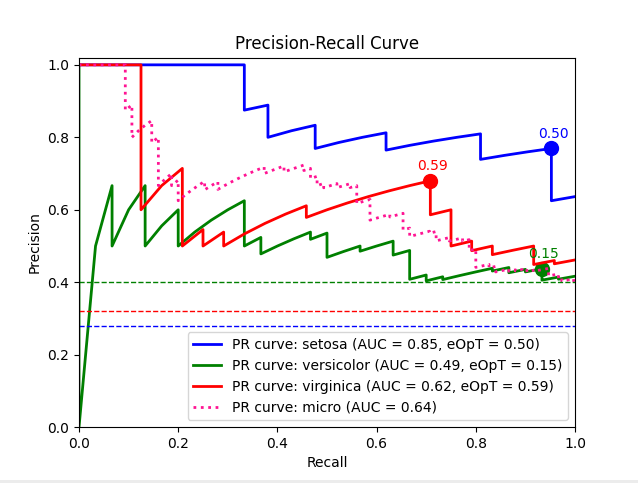
roc_graph_example()¶
Plot an example ROC graph of an SVM model predictions over the Iris dataset.
Based on sklearn examples
(as was seen on April 2018).
Example code:
import numpy as np
from sklearn import svm, datasets
from sklearn.model_selection import train_test_split
from sklearn.preprocessing import label_binarize
from sklearn.multiclass import OneVsRestClassifier
from dython.model_utils import metric_graph
# Load data
iris = datasets.load_iris()
X = iris.data
y = label_binarize(iris.target, classes=[0, 1, 2])
# Add noisy features
random_state = np.random.RandomState(4)
n_samples, n_features = X.shape
X = np.c_[X, random_state.randn(n_samples, 200 * n_features)]
# Train a model
X_train, X_test, y_train, y_test = train_test_split(X, y, test_size=.5, random_state=0)
classifier = OneVsRestClassifier(svm.SVC(kernel='linear', probability=True, random_state=0))
# Predict
y_score = classifier.fit(X_train, y_train).predict_proba(X_test)
# Plot ROC graphs
metric_graph(y_test, y_score, 'roc', class_names=iris.target_names)
Output:
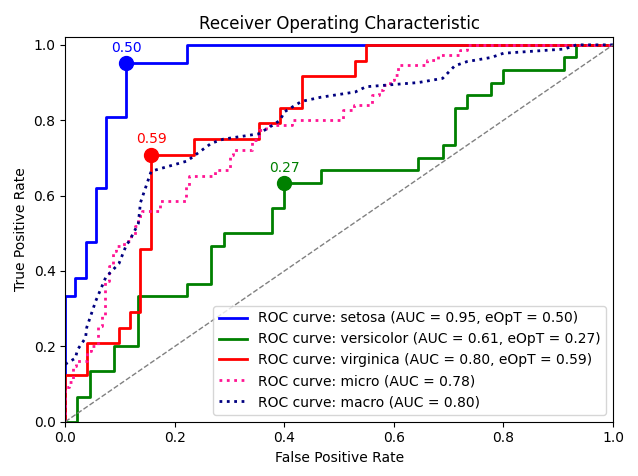
Note:
Due to the nature of np.random.RandomState which is used in this
example, the output graph may vary from one machine to another.
split_hist_example()¶
Plot an example of split histogram of data from the breast-cancer dataset.
While this example presents a numerical column split by a categorical one, categorical columns can also be used as the values, as well as numerical columns as the split criteria.
Example code:
import pandas as pd
from sklearn import datasets
from dython.data_utils import split_hist
# Load data and convert to DataFrame
data = datasets.load_breast_cancer()
df = pd.DataFrame(data=data.data, columns=data.feature_names)
df['malignant'] = [not bool(x) for x in data.target]
# Plot histogram
split_hist(df, 'mean radius', split_by='malignant', bins=20, figsize=(15,7))
Output:
